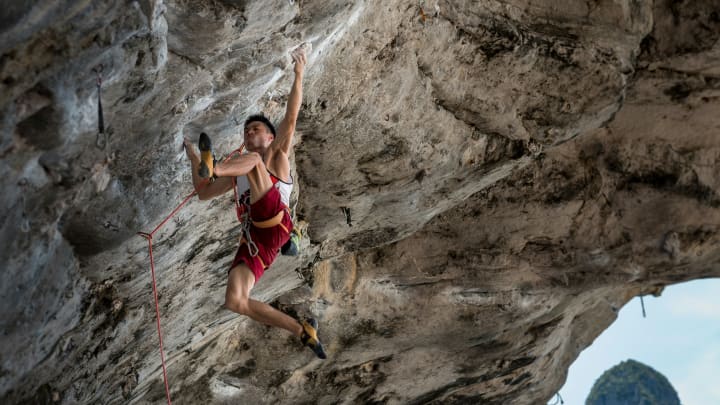Leave No Trace Ethics for Rock Climbers

The 7 'Leave No Trace' principles have become common knowledge for avid outdoor recreation participants. For rock climbers, each principle applies, though there are some additional things to keep in mind when heading out for a climbing trip. Here are some rock climbing-specific LNT tips.
1. Plan Ahead and Prepare: When choosing a route, be mindful of your own climbing ability, and the ability of your partner. By researching your intended route and utilizing guidebooks, you will be able to gain a better understanding of what each route has to offer. Along with this, it is always recommended to do gear checks prior to your adventure. This involves inspecting your ropes, harness, and all active and passive protection. Check for fraying on your ropes and other soft goods such as the dogbones of quickdraws, cracking or rust on cams or stoppers, and ensuring your harness is in good condition with a proper belay loop and intact leg loops.
2. Travel and Camp on Durable Surfaces: For some locations, climbing areas do not have a designated trail. However, if there is an established trail, use it and try not to stray from the path. Once you arrive to the base and begin climbing, avoid climbing on vegetation or lichen. Be aware of loose rocks or flakes that may be present.
3. Dispose of Waste Properly: For climbers, this goes beyond digging a proper cathole. Using chalk for climbing is common, as is seeing its unsightly residue on the rocks. Perhaps we've all seen a climber arriving at the crag, plunging both hands into their chalk bag, and slapping their hands together, creating a cloud of dust. Not only is this cloud uncomfortable to breathe in, but it settles on the ground beneath us. Being modest with the amount of chalk you use and preventing spillage is an excellent way to practice this LNT principle.
4. Leave What You Find: Whenever possible, it is advisable to use removable protection to help preserve the rock and leave it as you found it. Pitons and bolts will leave permanent scars on the rock, so avoid placing these items if it is feasible. Prior to bolting in any location, check with the appropriate land managers to seek permission.
5. Minimize Campfire Impacts: While campfires don't often play a role in a climbing trip, it is important to remain aware of fire regulations in case a fire is needed. Choose to use existing fire rings, keep the fire to a manageable size, and be cautious of the type of wood you are using and where it is from.
6. Respect Wildlife: In some locations such as Yosemite National Park in California and parts of the Adirondacks in New York, climbing route closures are put into place to protect peregrine falcons during nesting season. Respecting these closures and avoiding the areas are imperative to protecting this species' population. Beyond these closures, avoid feeding wildlife and damaging their habitats. Remember, we are guests in their home.
7. Be Considerate of Other Visitors: After topping out on a difficult route, you may be compelled to share the excitement with the world by cheering and yelling. However, the climbing party to your right who is working through the crux of their climb is likely to be annoyed by the commotion. In addition to noise levels, contain your gear in a singular location as a way to share the space with other visitors.
These 7 principles were designed to minimize our impact on the environment around us. It is important that we work together to follow these principles so we can continue enjoying the wilderness as we know it. For more information on 'Leave No Trace' and how to incorporate it into your hiking and camping journey, check out our recent article: Sustainable Camping: Leave No Trace Principles for Eco-Conscious Adventurers.
